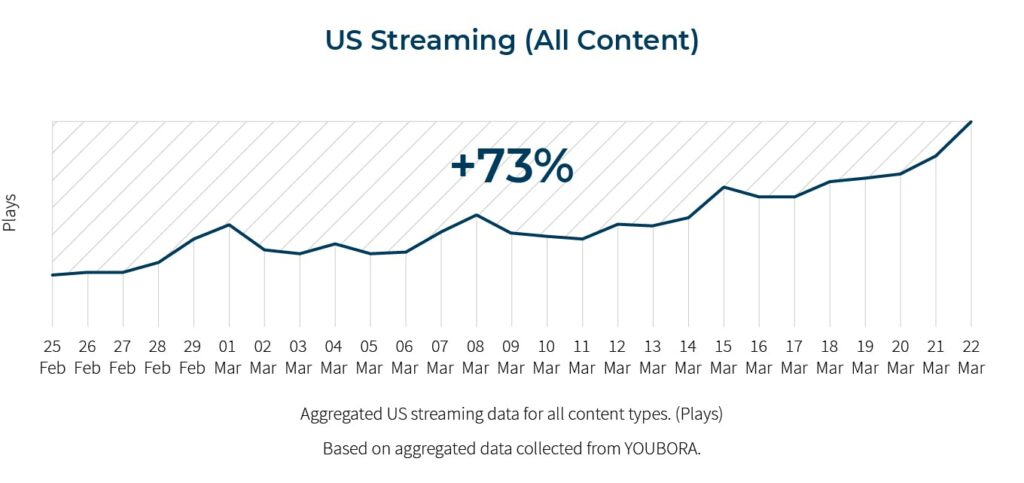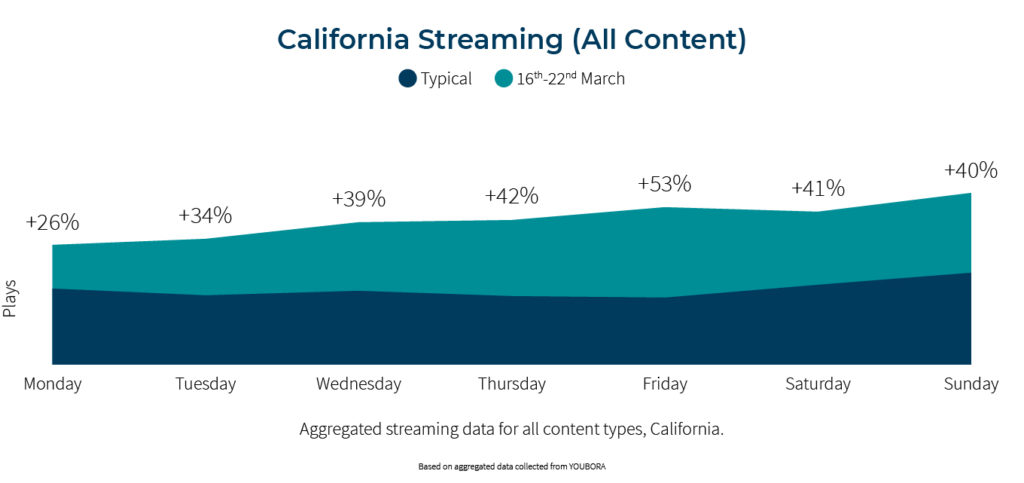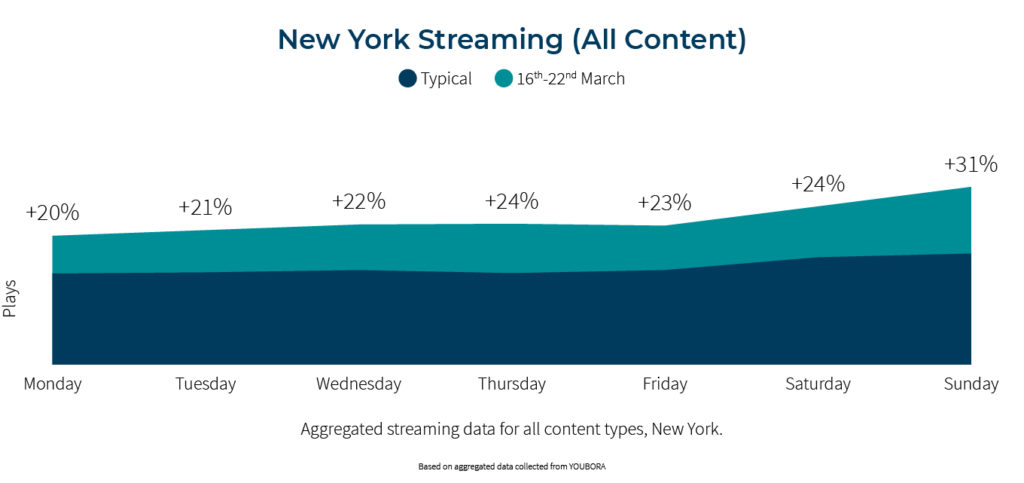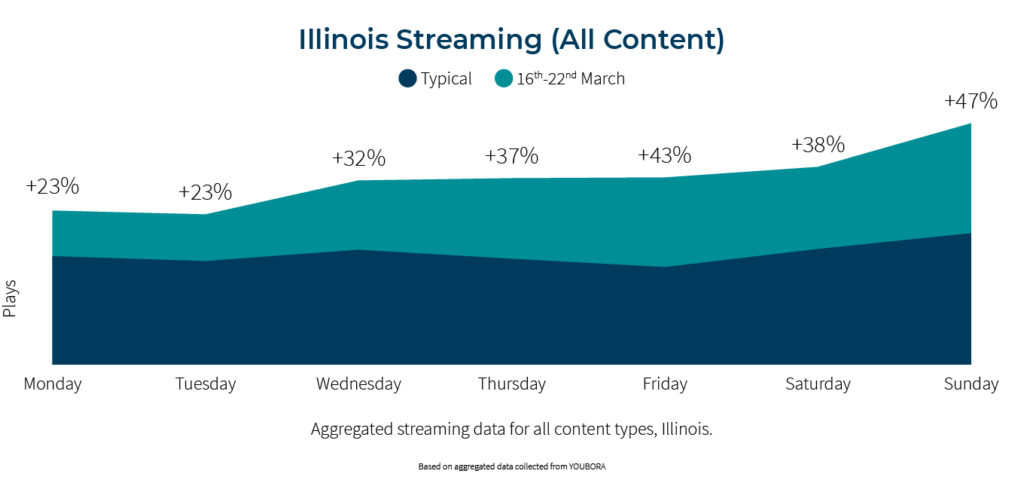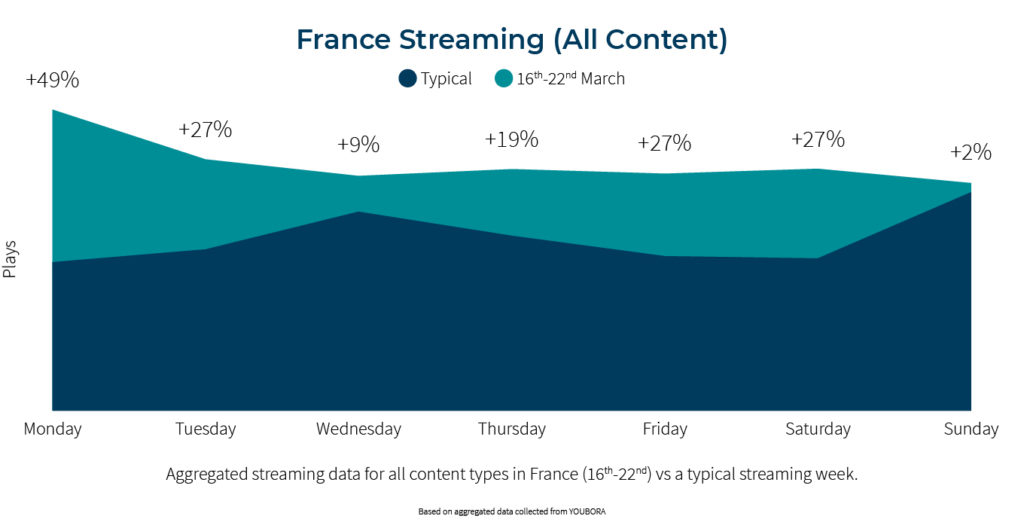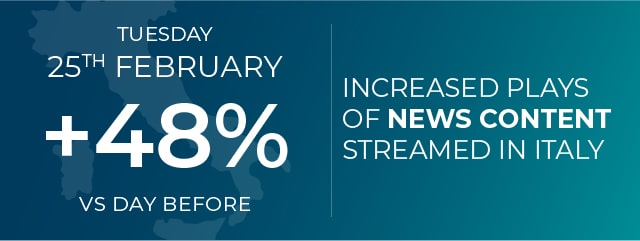The outbreak of the COVID-19 virus is drastically changing user behavioral patterns worldwide. As the virus spreads, streaming video providers must contend with sudden changes in variables including rising economic pressures, altered routines, moods, and priorities.
We have gathered together a series of data insights from different countries and across the video streaming spectrum as the public health situation has developed. In this article, we have analyzed end-user data from the past months and weeks to identify key patterns in how viewers are reacting to global developments, including state-ordered quarantine measures.
Matching these insights with the possible technical streaming difficulties that can arise can help video providers ensure high quality experiences for their viewers in times of disruption.
*For more insights into the development of COVID-19’s effect on the video streaming industry, follow our updates on LinkedIn.
The impact of COVID-19 on viewing habits
First China locked down, then Italy, Spain, and France as the virus spread through Europe. Last Friday (20th of March) the state of California went into official lockdown. New York and Illinois followed suit. On the 23rd of March, the UK announced it would enforce confinement for the next three weeks. On the 24th, so did India. As COVID-19 advances, whether under government orders or not, more and more people are staying in their homes, and will be for the foreseeable future. The full extent of the impact this will have on online streaming is yet to reveal itself, but as an immediate takeaway we can analyze how these populations are reacting to the initial stages of confinement.
Covid-19 in the US
At a macro level, looking at aggregated streaming data for the US we can see a steady increase in Plays streamed from late February as confirmed cases increased, and more and more people heeded official advice to stay indoors.
In fact, compared with a typical week, the week of 16th-22nd of March showed a +29% increase in streaming Plays across all content in the US. That is largely before the imposition of the official lockdowns of California, New York, and Illinois.
Diving into data for the states of California, New York, and Illinois, we can note a marked increase of Plays vs a typical week, with the percentage increase getting larger as the week went on in all cases. California has seen an increase of +39% in Plays over the past week, New York is up +24%, and streaming in Illinois increased +35%.
Aggregated streaming data for all content types, by state, as collected by YOUBORA
To get full visibility of how all your users are interacting with your service, set up a free consultation with one of our video experts here.
COVID-19 in Europe
For both France and Spain, two of the countries hardest hit by COVID-19 so far, we can already see a full week’s data since their respective governments imposed a state of enforced quarantine on their populations. Interestingly, aggregated data for both countries’ streaming usage registered a +22% increase in the first seven days after quarantine was officially declared in each country.
Even taking into account the cancellation of popular sports events, we can observe a significant increase in Plays, with notable peaks on the weekends.
Across Europe as a whole there was an +11% increase in Plays for this week, indicating that if the Coronavirus spreads across the continent as it has in France and Spain, streaming numbers will continue to rise.
COVID-19 in LATAM
Although in Latin America the virus is slightly behind Europe and Asia, LATAM’s streaming also saw impressive growth, noting a +32% increase in Plays over the week of 16th-22nd vs a typical week.
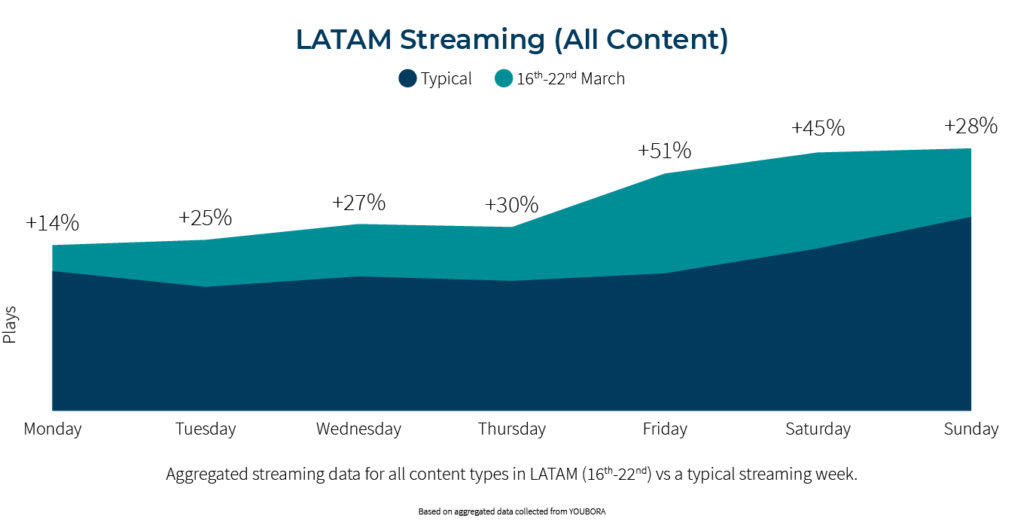
How are people watching: streaming increase by device usage globally
Globally, for this week (16th-22nd), there was an increase of +19% in the amount of Plays, compared to an average week. Looking at how this impacted Device usage, we can clearly conclude that the main driver of this growth was powered by increased viewing of content on Set top boxes (+27%) and PCs and TVs (both +26%), as people stream at home, rather than on the go. Although device usage increased across the board, Tablets (+16%), Consoles (+11%) and Smartphones (+8%) saw smaller increases for this week.
What are people watching?
As more people self isolate or are legally confined to their homes, not only will they watch more content, the type of content being streamed will also be altered. Here we looked at three quick takeaways from the first weeks of the new, Coronavirus-driven streaming reality.
News
Before captive audiences became a factor, the increased interest in live news content was the principal driver of changed user interaction with online video. To zoom in on just one example, on the 25th of February the WHO made an announcement, declaring: “the world should prepare for a pandemic.” In Italy, where the virus had already started to take hold, aggregated data for news content saw a +48% increase in Plays compared to similar content for the previous days, with the largest increases in Milan and Rome.
Long-form content
In Spain, over the first weekend of official state confinement (14th-16th), aggregated data for long-form content showed significant increases in both Plays and Viewing Hours over the weekend — in some cases over +50%— regardless of whether providers had added new content or not.
Religious content
In multiple regions, Sunday 15th marked an increase in audience for online streaming of religious sermons: providers saw anything from +85%, +100%, and even +300% increases in Plays compared to their usual scheduled programs.
This could be a sign of a double driver of audience size for this type of broadcast: both a surge in their regular viewer bases based on increased interest in religious content in a time of need, and also the fact that many churchgoers may have opted to stream the service online as a replacement for the inaccessible physical alternative.
The impact of COVID-19 on streaming quality
Video providers could not have foreseen this situation. Sudden increases in audience numbers can have drastic effects on the quality of experience that viewers have. Here we looked at how the traffic increases detailed above impacted streaming quality. In some cases, even though the amount of plays has led to significantly more errors – the amount of Errors per Play has decreased, possibly as a result of error-prone streams like live sporting events.
- Across the whole of the US, the increase in traffic didn’t go without impact; the amount of Errors recorded as a total across the US also increased +18% in the past week (16th-22nd), but the Errors per Play reduced -8%. The Buffer Ratio suffered slightly, increasing +5% across the country.
- Looking at data in Europe, comparing how the similar traffic increases in France and Spain affected quality can provide an interesting insight into how video providers are reacting to the crisis: Spain saw an +18% increase in Errors per Play across this week, and Errors per Play in France increased by +13%. Meanwhile, Buffer Ratio increased +8% for Spain and +14% for France.
- In terms of specific peaks in audience numbers it is valuable to analyze the news spike in Italy for the 25th of February: the surge in audience streaming was accompanied by a peak in fatal Startup Errors per Play (errors which cause the player to crash) that was +65% higher than the average.
The takeaway: as streaming video takes on unprecedented levels of importance in this global health crisis, the ability to adapt content delivery strategies to respond to changed audience needs is essential. From a business point of view, the potential benefit of a significant increase in traffic can be undone if your streaming quality is not up to the task. From a public health point of view, quality streaming has never been more important.
Quality tip: review your renditions strategy
In the face of increased consumption, and lack of clarity over how audience behavior will develop in the coming weeks and months, many streaming platforms globally are experimenting with adjusting rendition layers to reduce quality problems and avoid bandwidth saturation. See also Netflix and YouTube’s decisions to reduce bitrate during the crisis to alleviate stress on internet infrastructure (and Facebook, Amazon, and Disney).
This resonates with the advice our video expert and VP of Product Solutions at NPAW, Marc Maycas, shared with the Streaming Video Alliance, last week:
“Be prepared to adapt your content delivery strategy to ensure high quality standards in the face of increased consumption. It is key to optimize the quality of your content, adjusting bitrate to match different device usage. Now that people are at home, Smart TVs and Desktop will gain importance whereas you can afford less quality on Mobile streaming due to reduced usage. In normal circumstances, video services tend to want to ensure the best quality possible in Mobile, but in these circumstances it is worth checking the data to see whether the demand is worth it. If you can reduce top quality bitrate layers in a calculated manner, both join times and buffer ratios will decrease due to lower network congestion.”
– Marc Maycas, VP of Product Solutions at NPAW.
Reacting to COVID-19: final thoughts
These are strange and testing times for viewers and video providers alike. In unprecedented circumstances, the need for accurate, reliable data is more important than ever. As Plays increase across the board — up to +300% for some providers — those who can react quickest to their audience’s streaming needs have a unique opportunity to connect with users as they adapt to new routines. Our recommendation is to watch the data closely, and be reactive with your content delivery strategy. If your audience peaks, it may be worthwhile reducing the top quality layers of your content for a few viewers, if it will increase the overall experience for the majority. Whatever the global situation, YOUBORA Suite gives video providers 360 degree visibility over the full viewer journey, and allows them to make informed technical, operational, and business decisions based on reliable data in true real time. For more details, get in touch with one of our video experts.


